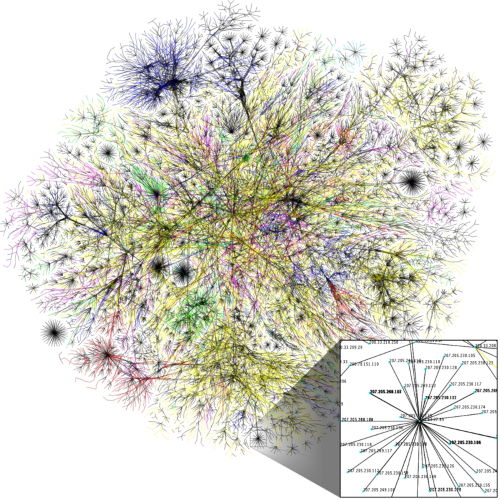Although people seem to use the terms WWW and Internet interchangeably, the two are actually very different beasts
The Internet
There is a belief that the Internet came about through military research. The US government needed to find a way to send the “launch” message to ICBM silos in the event of the telephone network being disabled.
Although the US military contributed to the formation of the internet it was a lot more than this, and was mainly in the academic domain.

In the early 60s various projects in the US, UK and France had the aim of building, and interconnecting, computer networks, particularly the Super Computers of the day, for data sharing and data transmission.
In 1974 research was published that evolved in to the Transmission Control Protocol (TCP) and the Internet protocol (IP), the basic technologies that are used to send computer data from one location to another.
In the early 80s the American National Science Foundation funded a number of supercomputers at several US universities, provided interconnectivity between them and also built a network that allowed by other academic institutions for research. This marked the beginning of the internet.
The first Internet Service Providers emerged in the USA & Australia in 1989 and in 1990 a small number of commercial entities in the USA were provided with private connections to this network. Connectivity increased rapidly, and the Internet as we know it, was born.
The Internet is the structure along which data travels when going from A to B and can be likened to a road network. And, like a road network, there are some routes that are faster than others and even the fast routes suffer from occasional issues and blockages which slows things down.
The World Wide Web

In 1989-90 research at CERN, in Switzerland, by British computer scientist, Tim Berners Lee (now Sir Tim) saw the development of a technology that linked hypertext documents in to an information system which was then accessible from any node (connection) on the network.
Sir Tim released his research in tot the world and allowed it to be used without any license fees and this allowed it to become the defacto document standard for the world wide web. This is why all web addresses start with HTTP, it defines the protocol to be used to transmit documents, Hypertext Transmission Protocol although we are now more familiar with HTTPS where the S adds Secure.
Basically, the Internet is the structure along which the data travels (the road system mentioned in the previous section) whilst the World Wide Web is the data that travels across that network, like traffic on a road.
If you need any help with your presence on the World Wide Web, from your website through Search Engien Optimisation (SEO), Advertising or anything else I’ll be more than happy to have a free chat to see how/where I can help your business. All you have to do is call me on 01793 238020, email andy@enterprise-oms.co.uk or just search Chief SEO Officer.



